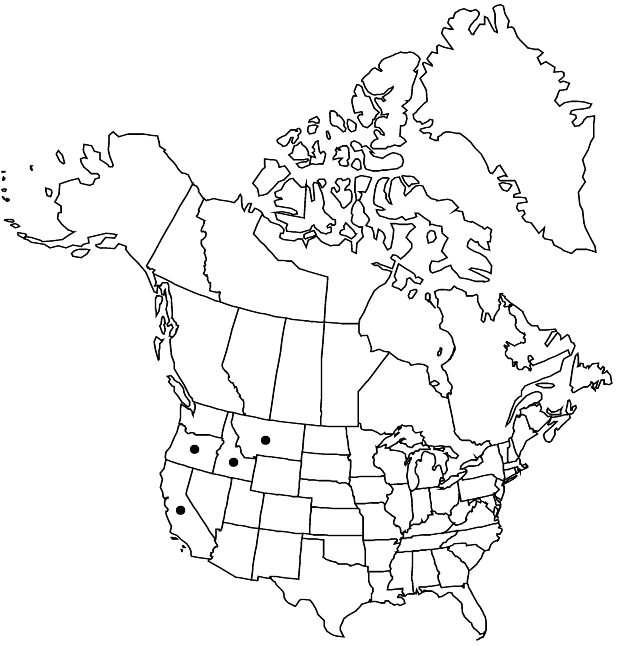Difference between revisions of "Boykinia major"
in W. H. Brewer et al., Bot. California 1: 196. 1876,.
FNA>Volume Importer |
imported>Volume Importer |
||
| (One intermediate revision by the same user not shown) | |||
| Line 1: | Line 1: | ||
{{Treatment/ID | {{Treatment/ID | ||
|accepted_name=Boykinia major | |accepted_name=Boykinia major | ||
| − | |accepted_authority=A. Gray | + | |accepted_authority=A. Gray |
|publications={{Treatment/Publication | |publications={{Treatment/Publication | ||
|title=in W. H. Brewer et al., Bot. California | |title=in W. H. Brewer et al., Bot. California | ||
|place=1: 196. 1876, | |place=1: 196. 1876, | ||
| + | }} | ||
| + | |special_status={{Treatment/ID/Special_status | ||
| + | |code=E | ||
| + | |label=Endemic | ||
}} | }} | ||
|basionyms= | |basionyms= | ||
| Line 35: | Line 39: | ||
-->{{#Taxon: | -->{{#Taxon: | ||
name=Boykinia major | name=Boykinia major | ||
| − | |authority=A. Gray | + | |authority=A. Gray |
|rank=species | |rank=species | ||
|parent rank=genus | |parent rank=genus | ||
| Line 48: | Line 52: | ||
|publication title=in W. H. Brewer et al., Bot. California | |publication title=in W. H. Brewer et al., Bot. California | ||
|publication year= | |publication year= | ||
| − | |special status= | + | |special status=Endemic |
| − | |source xml=https:// | + | |source xml=https://bitbucket.org/aafc-mbb/fna-data-curation/src/2e0870ddd59836b60bcf96646a41e87ea5a5943a/coarse_grained_fna_xml/V8/V8_253.xml |
|genus=Boykinia | |genus=Boykinia | ||
|species=Boykinia major | |species=Boykinia major | ||
Latest revision as of 22:42, 5 November 2020
Plants: rhizomes proliferating underground. Flowering stems (20–)50–130 cm. Basal leaves: petiole 5–25(–40) cm; blade usually reniform, sometimes cordate, 3–7-lobed to 1/2–3/4 its length, 5–15(–22) × 7–18(–26) cm, margins 2–3-times dentate. Cauline leaves: stipules (2–)6–20(–35) mm, foliaceous, smaller ones fringed with brown hairs. Inflorescences corymbiform, 8–15(–21)-flowered per primary branch. Pedicels densely stipitate-glandular. Flowers: hypanthium saucer-shaped, free portion 1–2 mm, densely stipitate-glandular; sepals spreading, triangular, 2–4 mm, apex acute; petals suborbiculate to ovate, 4–7 × 2–5 mm, ca. 2 times as long as sepals, base contracted to claw 0.5–3 mm, margins undulate; nectary yellow; stamens (1.6–)2–3 mm; ovary inferior. Capsules ovoid, turbinate, or urceolate. Seeds usually black, tuberculate. 2n = 28.
Phenology: Flowering summer(-early autumn).
Habitat: Wet woodlands, margins of lakes, ponds, and watercourses
Elevation: 200-2200 m
Distribution

Calif., Idaho, Mont., Oreg.
Discussion
Records of Boykinia major from Alaska (G. W. Cooley 1892) relate to specimens of Heuchera glabra. Some populations from Idaho are polymorphic for dentate versus entire petals, and some plants from northern California have purple blotches proximally on the petals. Specimens intermediate in gross morphology between B. major and B. occidentalis, and which match synthetic hybrids, have been collected from Lane County, Oregon (R. J. Gornall and B. A. Bohm 1985). Boykinia major is occasionally grown in gardens.
Selected References
None.